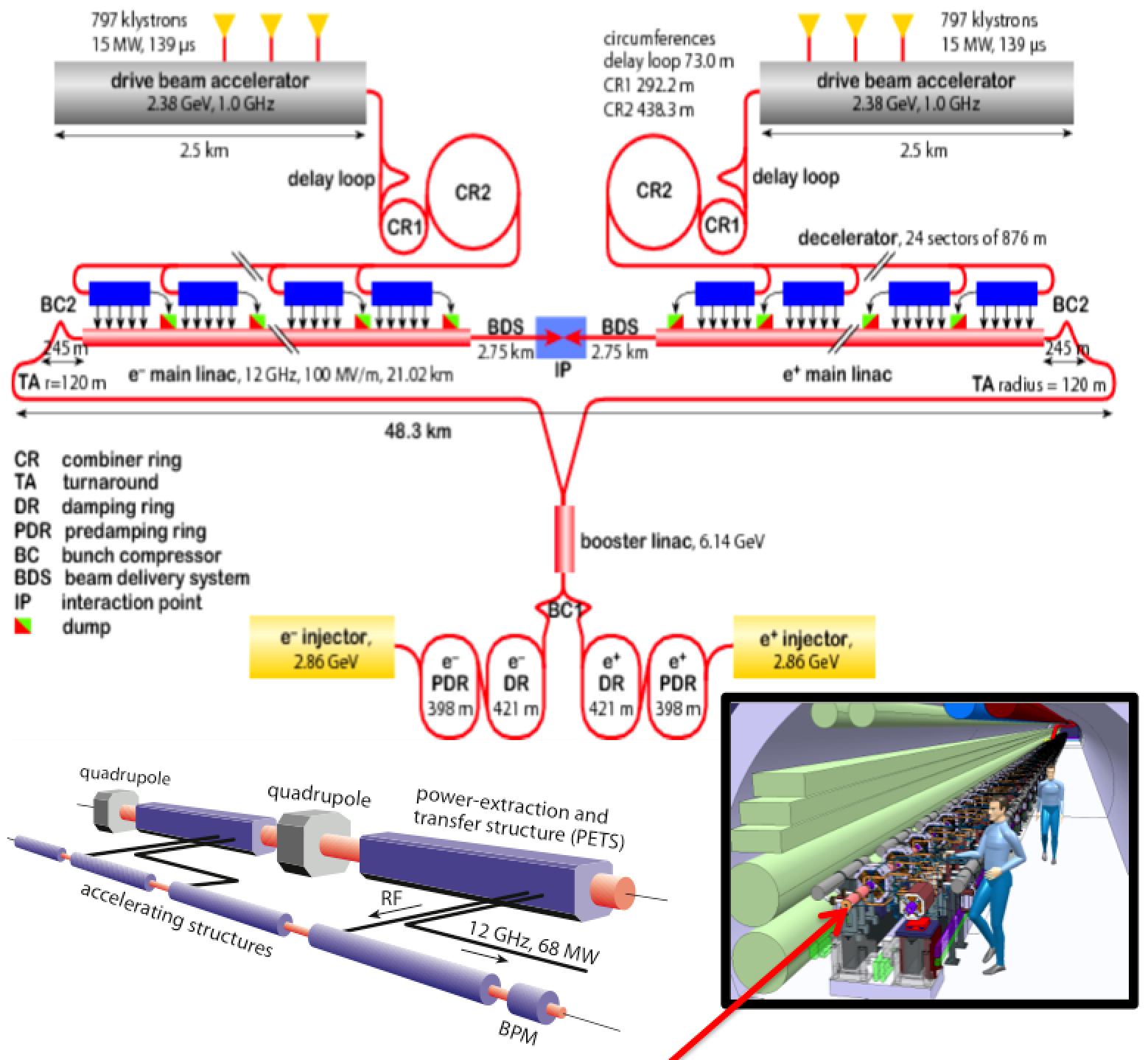It would provide significant fundamental physics information complementary to the LHC and a lower-energy linear e+/e- collider, as a result of its unique combination of high energy and experimental precision.
The University of Oslo is a significant contributor to the Compact Linear Collider (CLIC) collaboration. The CLIC technology is based on a novel two-beam acceleration concept, where the radio-frequency power used for acceleration of the main beams is extracted from high-intensity electron drive beams. In order to achieve enough collisions per second to perform precision physics, the electron and positron beams colliding must be of unprecedented high quality, with an ultra small emittance. The Oslo research further develops emittance preservation schemes for linear colliders, including experimental tests of beam based alignment schemes and design of wake field monitors for micrometer alignment of the beam inside accelerating structures. Our group studies as well how the high-gradient CLIC X-band RF technology can be used for cost-effective, compact Free Electron Lasers.
More information on CLIC's own web pages.
